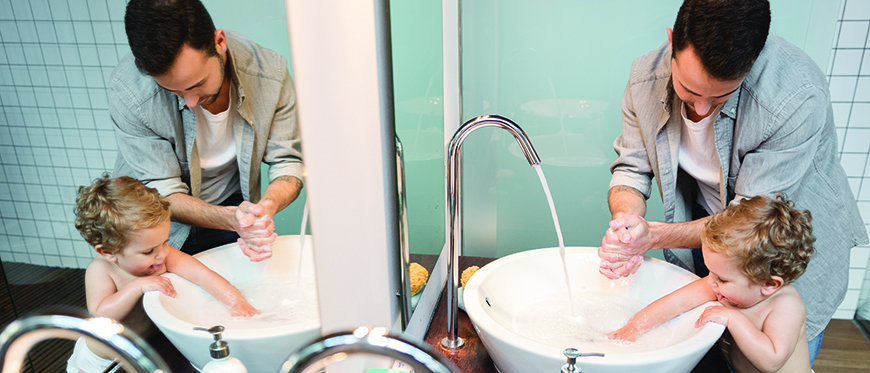Children in unexpected places are helping an old trend “go viral,” but not in a good way. Hand, foot and mouth disease, or HFMD, most common among young children in developing regions, has been popping up as a troublesome virus in places as “squeaky clean” as Green Bay, Wisconsin. There is no vaccine to prevent children or adults from getting HFMD, and no specific treatment, but as the Center for Disease Control and others point out, organizations and individuals can literally take prevention into their own hands, by making a serious push toward hand hygiene.
Clean hands, clean places: A case study on preventing HFMD
Children are at particular risk, not only because of less-developed immune systems, but also because of less-developed hygiene habits. However, recent studies have shown that a programmatic approach combining easy-to-use hygiene supplies and innovative education can significantly lower the incidence of HFMD.
Consider the example of a recent study in China, undertaken by an international team of private and public organizations and universities, which demonstrated that good hand hygiene can reduce the incidence of HFMD by as much as 60%. The effort involved putting high-quality dispensers, paper towels and anti-bacterial soap, along with anti-bacterial wipes, in 18 kindergartens in the city of Shenzhen, where HFMD had been increasing as a health issue.
It wasn’t, however, just a matter of installing dispensers and giving out supplies – an innovative program of engagement and education was also needed. The young students were given an interactive handwashing kit, including a storybook, digital game app and ‘graduation’ certificates, all designed to promote positive hand hygiene habits. Teachers were given training on how to help students use the kits. Through this concerted program of education, engagement, and access to the right products, prevention was proven to dramatically lower the risk of contracting HFMD.
Anyone and everyone can help prevent HFMD
Even where the benefits of hand-hygiene are well known, the total picture of HFMD and its prevention is often unclear. Any individual can have a significant impact by educating their companies, institutions and even families on the key facts about HFMD.
To begin, it is critical to remember that here is no vaccine or treatment for HFMD. As a result, prevention is imperative, including efforts such as:
- Frequent hand cleansing with soap and water or hand sanitizers, especially after touching any blister or sore, before preparing food and eating, before feeding young infants, after using the toilet, and after changing diapers.
- Cleaning contaminated surfaces and soiled items (including toys) first with soap and water, and then disinfecting them with antibacterial wipes or a diluted solution of chlorine bleach.
- Avoiding close contact, such as kissing, hugging, sharing utensils, et cetera, with children who have HFMD.
- Keeping sick infants and children away from school, daycare and other gatherings.
- Covering mouth and nose when sneezing or coughing.
- Disposing used tissues and diapers into waste bins that close tightly.
- Maintaining cleanliness of home, child care facilities, kindergartens, and schools.
- Monitoring the sick child’s condition closely, and seeking prompt medical attention if persistent high fever, decrease in alertness, or deterioration in general condition occurs.
While HFMD is certainly serious for individuals, organizations and communities, it should not be allowed to cause alarm – nearly all patients recover within seven to ten days. Rather, remember that HMFD can usually be prevented and controlled with a mix of common-sense cleanliness and uncommon vigilance.
SOURCES
CDC
SCA Vida Shenzhen Case Study
World Health Organization
